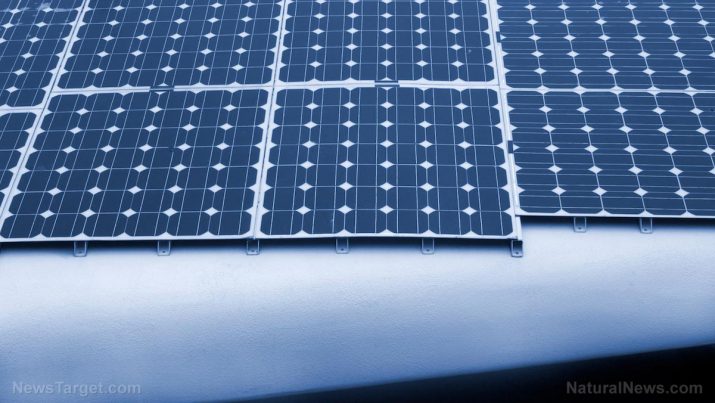
“Magic” alloy will allow solar cells to capture near-infrared light
Sunday, August 12, 2018 by Frances Bloomfield
http://www.futuresciencenews.com/2018-08-12-magic-allow-discovery-will-allow-solar-panels-to-capture-more-energy-from-invisible-portions-of-the-light-spectrum.html

A team of researchers from the University of Michigan has taken the next step in solar energy technology. Specifically, they’ve developed a new semiconductor alloy that can capture near-infrared light. In addition to being easier and cheaper to manufacture, ScienceDaily.com reported that the semiconductor alloy is also compatible with the semiconductors utilized in concentrator photovoltaics.
This type of photovoltaic technology is known to be far more efficient than conventional, store-bought solar panels. However, concentrator photovoltaics are incapable of harnessing near-infrared light due to how they’re made: three different layers capture different parts of light, with the next layer catching what the previous layer couldn’t. Infrared light slips past all these layers with ease, and has presented scientists with the unique challenge of coming up with an alloy that is sensitive to infrared light yet matches the atomic structure of the three other layers in the solar cell. Until recently, they’ve been turning to expensive and limited formulas to bypass these restrictions.
Fortunately, the researchers found the perfect combination in arsenic, gallium, arsenide, nitrogen, bismuth and silicon. This mixture of chemicals can be sprayed onto photovoltaic cells to significantly increase their efficiency.
Speaking about their findings, which have been published in Applied Physics Letters, professor of materials science Rachel Goldman said: “’Magic’ is not a word we use often as materials scientists. But that’s what it felt like when we finally got it right.” (Related: These Amazing New Solar Cells Are the Future of Energy.)
This discovery follows an earlier innovation by Goldman’s team: simplifying the process of making semiconductors. Apart from silicon, gallium arsenide was routinely used as a semiconductor. Although more effective a semiconductor than silicon, the problem with gallium arsenide lay in the dopants, or the substances used to produce desired electrical characteristics. Gallium arsenide needs silicon and beryllium as its dopants. Using beryllium is problematic due to its toxicity and its cost being 10 times that of silicon dopants. Goldman and her team worked around this simply by lowering the amount of arsenic in the dopants of gallium arsenide, which in turn resulted in silicon dopants performing the same role as beryllium with none of the hazards and at a fraction of the cost.
“Since you are using less material to basically do the same thing, it would cut the cost down,” said Richard Field, a University of Michigan graduate student who worked on the project with Goldman.
Regarding their work, Goldman and Field told Seeker.com that they hope their findings will create a new generation of better, cheaper, and more efficient solar energy collectors.
“Once you have silicon and you optimize it, you optimize it. With gallium arsenide, you can add more things, you can tweak things. There is a lot more you can do,” added Field.
Visit NewEnergyReport.com for more stories about scientific discoveries and breakthroughs.
Sources include:
Tagged Under: Tags: Chemistry, concentrator photovoltaics, future science, future tech, materials science, Photovoltaics, physics, renewable energy, semiconductors, solar cells, solar energy





